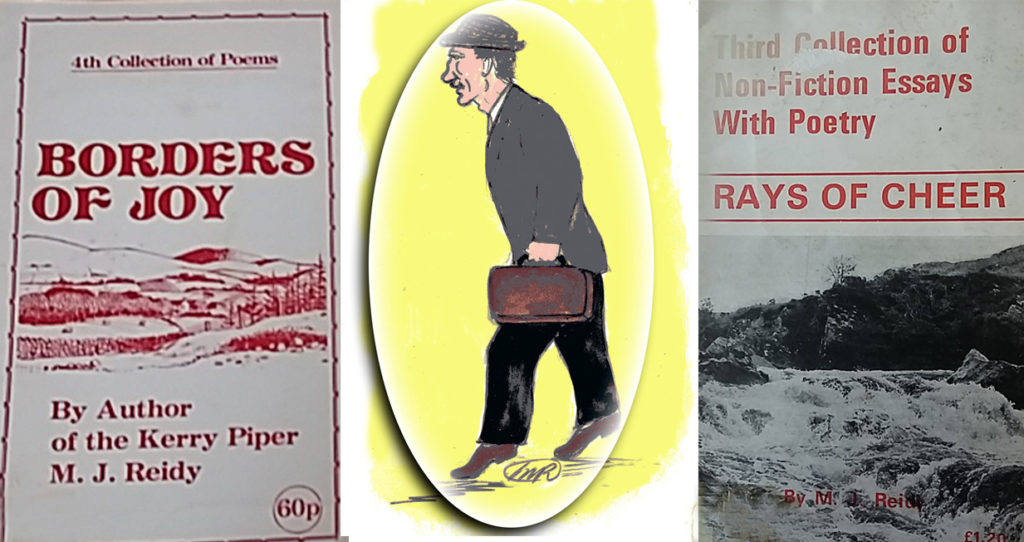In one of his collections of essays and poetry, Rays of Cheer (1978), Castleisland’s M J Reidy – otherwise Moss Tommy – gave space to an essay by one of his supporters and admirers, educationalist and music composer, Puan Katijah Tan Guat Bee, of Penang, an island off the coast of Malaysia.
Katijah’s essay, ‘Yuletide Joys,’ a three page account of the Chen family Christmas in 1949 Malaya, was introduced with a poetic description of Penang:
The Lights of Penang Hill
It shines like diamonds bright,
Thro’ the darkness of the night,
It shines like fire-fly,
And yet like stars in the sky.
Penang, my island home, more popularly known as Pearl of the Orient or even Emerald Isle. It stands on an area of 110 square miles off the north-west coast of the Malay Peninsula. Coastal districts are low and undulating, rising to hills situated mostly in the centre. Penang Hill rises to a peak of 2,420 feet above sea level; the funicular railway runs from the foot to the summit. Other peaks are 2,520 feet and 2,735 feet above sea level.
Hill bungalows and chateaux stand sedate on hill crests and levelled slopes … at night the light of Penang Hill is bewitchingly fascinating, thus inspiring me to compose this poem in tribute to the gem of my country.
A view from the top to the city of Georgetown below in the dusk all laid out on the cape is breath-taking as a flashing solitaire that sparkles with the glints and colours of the spectrum of the rainbow. Its temperature is divine, its atmosphere tranquil but day time in the city can be scorching and swelteringly hot, though fanned by insular breezes.
Tropical rainstorms occur in the much later part of the year but the sun blazes throughout with occasional showers and the sea is caressingly warm, the beaches golden strips of sheer delight … its allure is irresistible.
Several modern hotels, like Palm Beach, The Casuarina, Rasa Sayang, stand amidst the post-war seaside bungalows and rural huts, villages and palm groves. Four reservoirs provide natural fresh water to the islanders, and Batu Ferringhi, about twelve miles from the city, is a lover’s paradise.
Besides the hills and beaches, there are also many attractions of historical and ethnic if not scenic beauty all inimitably exotic and Asian … a land of mixed races, customs and cultures, religions, cuisine and languages, but English is widely spoken for Penang was once a British colony, thus blending Malaysian with the richness of British heritage and cultures.
Geographically, travelling through Sorrento in Italy reminds me very much of Penang, my island home, but the latter is much smaller in area space, less heavily populated and multi-racial. And the rapture that takes away my breath on this island more than all else is The Lights of Penang Hill … a night-time of colours, movement and serenity as of the stars in the heaven.
Moss Tommy’s Literature
Moss Tommy, who hailed from Cordal, published about a dozen booklets of stories and poems over a period of about ten years in the 1970s and 1980s.[1]
He died in 1988, aged about 70. He is remembered locally as ‘a great and absolutely genuine character’:
Known locally as ‘Moss Tommy’ he was always on the roads with a raincoat thrown over an arm and a case and often a satchel of books and notes flung over his shoulder and a hat perched on the Cordal side of his head.[2]

It is certain that a study of the literature of Moss Tommy will shed more light on his life and times.[3]
___________________
[1] Titles include The Kerry Piper (1974) First Collection of Stories (1975) Borders of Joy (1975) Borders of Song (1976) Borders of Hope (1978) Rays of Cheer (1978) Mirror of Truth (1979) Vision of Nature (1979) Rays of Light (1980) Shades of Fancy (1981) Pleasant Holidays (1983). A number of these titles (Borders of Joy/Song/Hope; Kerry Piper; Rays of Cheer; Mirror of Truth) held in the O’Donohoe Collection, ref: IE MOD/A22/2 and IE MOD/C79. [2] Recollection of John Reidy, editor of the Maine Valley Post. [3] Reidy Literary and Family Papers held in Local Studies, Tralee.



